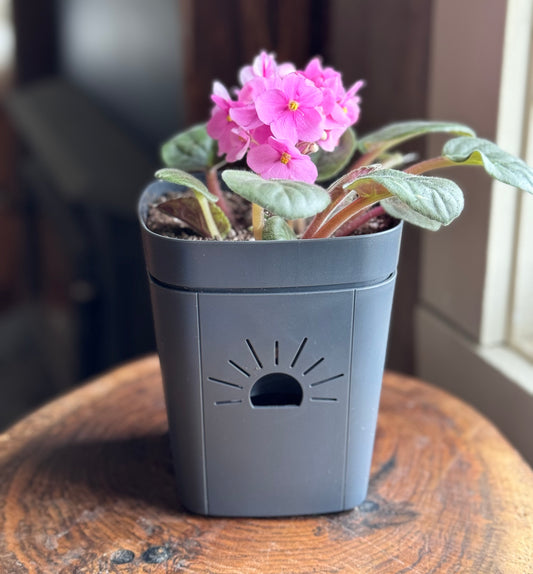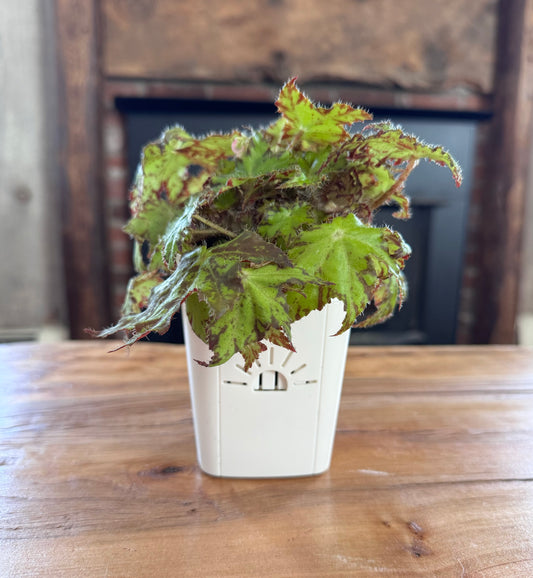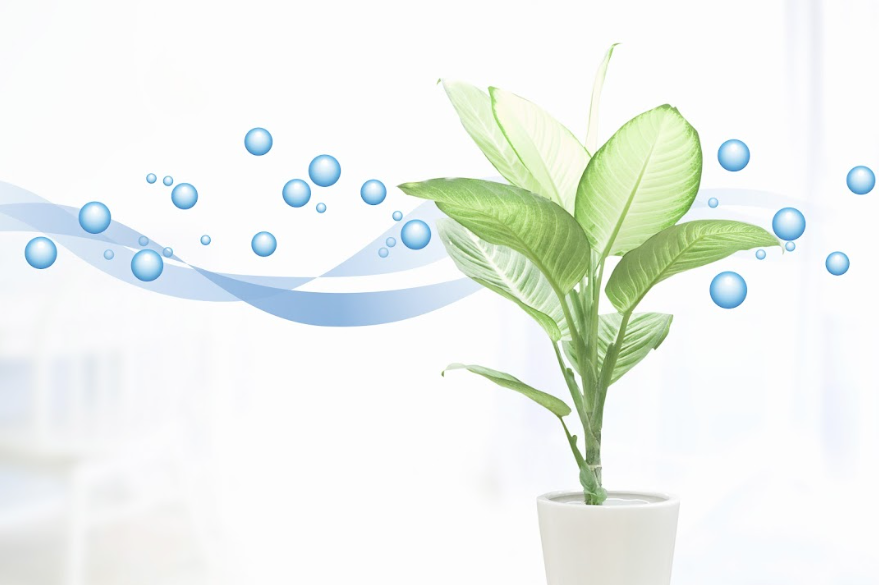What Is It?
Air root pruning is a method of growing plants in pots or containers which encourages healthier, highly branched root systems. Air pruning happens when plant roots are exposed to dry air. The root tips are dried up or "burned" off. This is the plants' natural reaction and causes no stress to the plant. This self-pruning stimulates the plant to produce new and healthy roots continually. In short, the tip of the root is killed, which encourages the development of secondary roots. Ultimately this results in a plant with a huge quantity of young, robust roots.What Does It Do?
Air root pruning creates strong roots with many lateral branches and an explosion of feeder roots. This allows the plant to easily consume nutrients and water, making it a healthier plant with vigorous growth. A strong root system will create a plant better able to establish itself. When roots cannot come into contact with air, they tend to grow in a restricted pattern. This type of growth causes them to become tangled or expand in a circular pattern inside the container. The plant struggles to get the water and nutrients it needs due to its damaged root system. This damage can result in wilting leaves or stunted growth. A well-branched root system with many feeder roots helps a plant absorb the necessary water and nutrients for better growth and health.Benefits
More Feeder Roots- Air root pruning stimulates the plant to grow more feeder roots and root hairs. This helps the plant absorb water and nutrients more efficiently. Instead of sitting in stagnant water, the plant is able to maintain a healthy water-oxygen exchange.
Nutrient-Dense Plants- The thick many-branched roots of air-pruned plants can absorb more nutrients. This is especially good news for the food you plan to eat! Not only does it result in a healthier, more robust plant, but edible plants are more nutritious when grown this way.
Pot-Bound No More - We also love that it prevents plants from becoming pot-bound. The roots naturally trim themselves to fit the container. So they can remain in smaller pots for much longer.
Say Goodbye to Root Rot - All houseplant enthusiasts know that the quickest way to kill a plant is by overwatering. By incorporating root zone oxygen, this becomes a non-issue. Constantly aerated roots thrive instead of waterlogging.
Faster Growth - Air-pruned plants reach maturity more quickly and are healthier. This can be a huge win for those with a limited growing season. For growers selling plants, this results in extra profit.
Successful Transplants - Air-pruned plants are more successfully transplanted due to their robust lateral root systems. For all of us who have watched a newly relocated plant struggle, this can be a huge relief.
Safer Trees - Trees grown in traditional pots have a circular girdle of roots that can cause instability. Air-pruned tree roots are more stable with deep-reaching, anchored roots.
No Extra Effort - The container does all of the work for you. The highest quality air pruning containers prune the bottom and sides of the plant with no extra effort on your part.
Myths
More Expensive- It is a common myth that air pruning techniques are more expensive. The truth is, in the long run, air pruning saves you money. No additional tools or materials are needed. Simply a different type of pot.
Damages Plants - This myth couldn't be farther from the truth. Killing the tip of the roots does sound bad, we admit. But the result is more lateral roots and hardier plants with the ability to take up more nutrients. It is a natural method that does not cause stress to the plant.
High Maintenance - This myth is officially debunked. We all know that healthier plants require less maintenance. Air-pruned plants are less susceptible to fungal disease, root rot, and pests like fungus gnats. All of those high-maintenance conditions can be avoided with air root pruning.
History and Origins
Some people consider Carl Whitcomb, Ph.D., the father of air root pruning. He studied the subject extensively in the 1960s and held several patents for containers. His research generated a lot of interest in the topic, and we are still studying and perfecting his original techniques today. Due to various issues like instability and limited growth, the issue of roots circling in containers needed to be addressed. Some suggested cutting or shaving the root systems of plants grown in traditional containers. However, this was not completely effective and created open wounds, which gave pathogens an entry point. The importance of root system health is well known, and many kinds of containers have been devised to meet this need. One early version was a waxed cardboard milk carton with an open bottom. The results were positive. When the taproot reached the base, it became exposed to air, and the tip dried out and died, prompting new roots to form in its place. However, all the roots were pulled downward, so further development was needed to encourage branching. In the past, containers were reinforced with inner walls to keep roots from growing outward, but they couldn't be stacked. People tried using polybags, but the roots got stuck in the bottom and didn't branch out. This made them tricky to fill and maneuver and still did not result in lateral roots. Another design used water suffocation by allowing the roots to grow into a reservoir. This resulted in root rot and many pathogen issues. Finally, we come to the latest design of pots for air-root-pruning. These systems use holes, ledges, and ribs to direct the roots to openings. The roots then come in contact with air and effectively prune themselves. They are being successfully used across many industries today.What Industries Use It?
Air root pruning technology is proving to be incredibly useful in a variety of industries. In greenhouse management, air root pruning helps maintain the ideal environment for growing edible produce and bedding plants, as well as providing better control over moisture levels. Garden centers are also finding that using this technology can help them provide healthier, stronger plants, resulting in recurring customers. Cannabis businesses especially benefit from the increased oxygenation provided by air root pruning systems which can result in larger yields and improved plant health. Air root pruning is also becoming popular with lawn and landscape professionals who want to ensure their clients have lush ornamental plants without spending too much time or effort on maintenance. Municipalities are also seeing the benefits of lowered maintenance costs. Both home gardeners and commercial food growers see the tremendous benefits of increasing the nutrient value of food using air-pruning containers. Finally, houseplant enthusiasts see substantial success with air root pruning systems in eliminating common diseases, pests, and root rot.What Type of Plants?
Almost any plant can be grown in an air root pruning container. Whether you are a commercial grower, greenhouse owner, or houseplant collector, there is a good reason to air root prune. Here are a few of the most common applications.Trees- Air pruning is a useful technique for propagating trees as it extends the lifespan of the plant material, minimizes root circling, and facilitates the faster establishment of transplants. It eliminates the need for frequent up potting, which saves both time and money. An air pruning pot encourages the development of a dense root ball filled with carbohydrates, which is more resilient to extreme temperatures and can result in a better survival rate for the tree.
Vegetables, Fruits, and Herbs - Herbs are already some of the most nutrient-dense plants on the planet. If you are growing food, you want it to have the most vitamins and minerals possible. You take great care to provide high-quality soil, fertilizer, and organic matter. Air root pruning encourages up to 200% more roots. This means more nutrients are taken up and deposited into the plant tissues that you plan to eat!
Houseplants - If you have ever been plagued with a fungus gnat hoard, lost a precious rare plant to root rot, or watched a fungal disease brown and wither the seedlings you worked so hard to propagate, then you are in for a treat. Air root pruning containers help to eliminate all of these common houseplant concerns.
Ornamentals - Annual and perennial plants both thrive using air root pruning. Because they can consume more water, nutrients, and oxygen, they become established more quickly and are much easier to transplant.
Succulents and Cacti - Yes! You can grow succulent plants and cacti using an air root pruning system. The extra oxygen circulation is a breath of fresh air for plants that come from arid climates. Many of us have lovingly murdered a succulent plant by providing too much water. With air-root pruning, your succulents are safe from root rot.





 Verified Buyer
Verified Buyer









